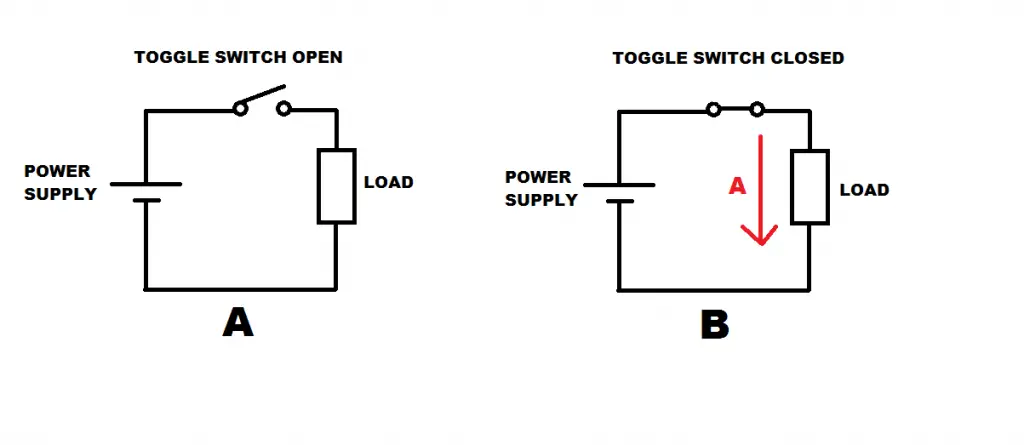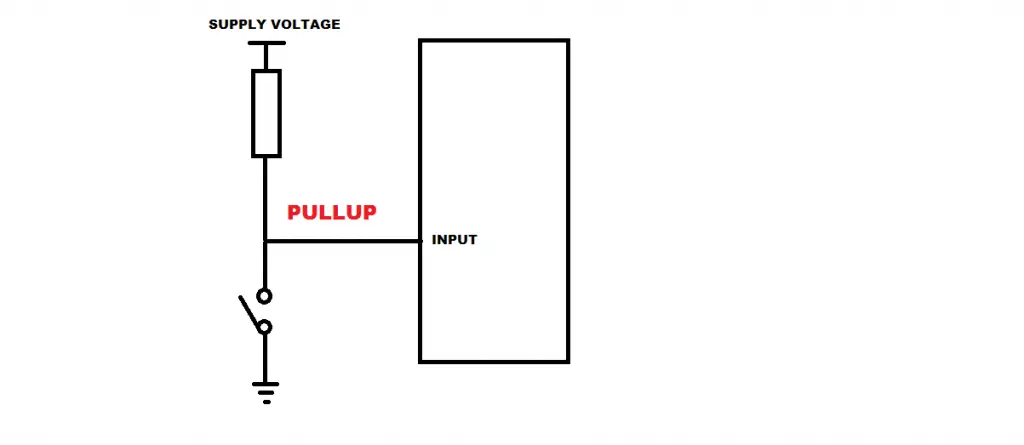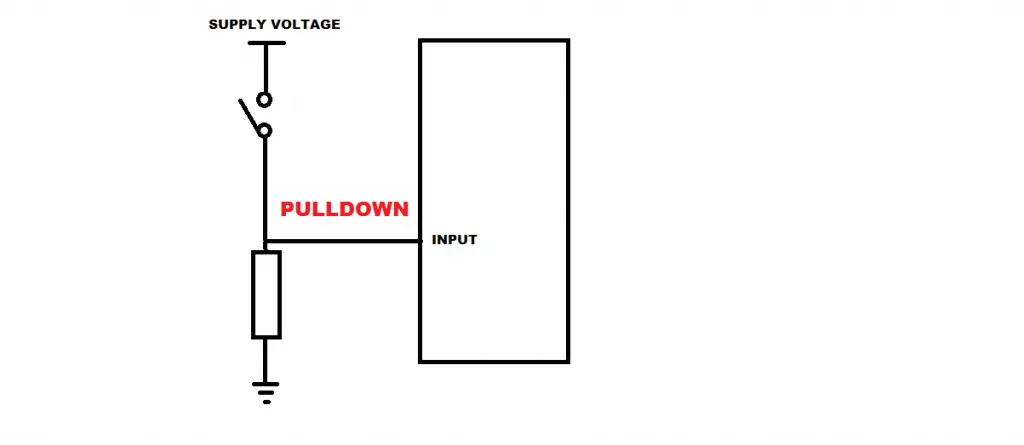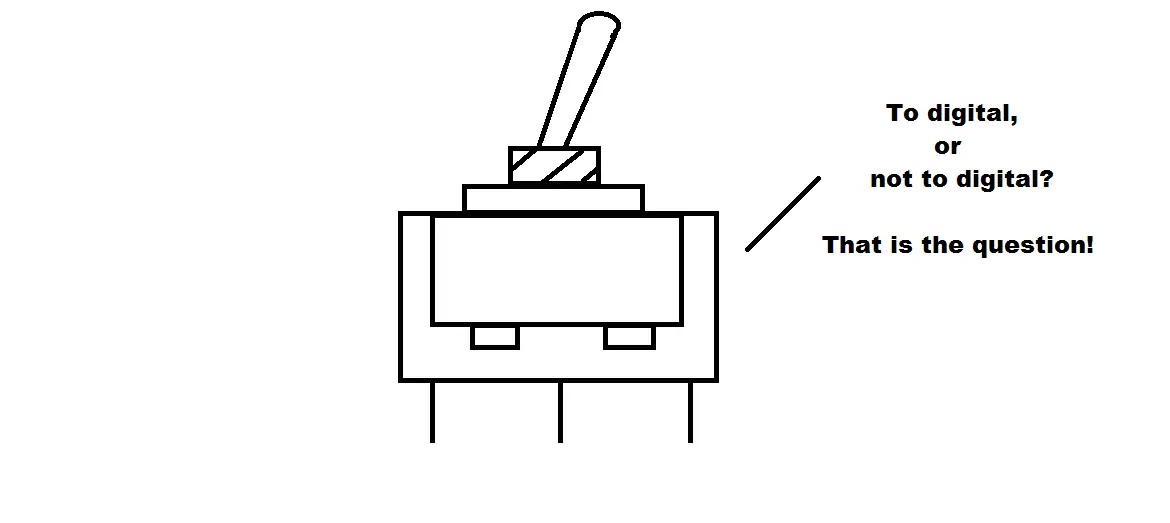Toggle switches provide a means of controlling current flow in electrical and electronic circuits. They distinguish themselves from other switches as they have a handle or lever that you can ‘toggle’ back and forth.
Their main function is to either let current flow from a power supply to a device, or break the flow of current.
But, can a toggle switch produce a digital signal? A toggle switch is analog by nature and cannot produce digital signals. However, when used as an input with a device like a microcontroller, it can be used to produce digital signals which the microcontroller can interpret as 1’s and 0’s.
Difference between a digital and analog signal
Taking a quick look at the difference between an Analog and Digital signal will help you understand better how a toggle switch can produce a digital signal.
Analog Signal – The best way to look at an analog signal is to look around you at the physical world. The world is filled with analog signals. An analog signal can be best described as a continuous signal.
Temperature is a great example of an analog signal that is present in the world. It comes in a range of values that can be represented by a sine wave (as most analog signals can be represented by).
Digital Signal – If Analog signals are continuous and have a range of values, Digital signals have two distinct values ; 0 or 1.
When displayed as a graph, digital signals visually represent square waves.
Digital signals are commonly used for computing and digital electronics which include Microprocessors and Micrcontrollers.
How toggle switches can be used to produce digital signals
Now, we know the difference between an analog and digital signal, let’s take a closer look at the toggle switch and how it can be used to produce a digital signal.
The main purpose of a toggle switch is to either allow or block current flow from a power supply (like a battery) to a device it is powering.
Below is a diagram depicting a simple circuit of a power supply, toggle switch and load.

In diagram A the toggle switch is open, and therefore no current can flow from the power supply to the load.
The toggle switch in diagram B is closed, and therefore current can flow through and power the load.
With this basic understanding, we can see how a toggle switch can be used to produce a digital signal below.
A toggle switch used with a microcontroller to produce digital signal
A toggle switch cannot produce a digital signal by itself, however, when used with a digital device like a microcontroller, it can be used in a configuration that allows the microcontroller to interpret the information sent from the toggle switch as a digital signal.
Microcontrollers have input ports that have the ability to interpret information from the external world through input devices like sensors, buttons and switches.
Since a microcontroller is a digital device, it needs to do its computation using 1’s and 0’s. However, it deals with many analog devices.
One feature that a microcontroller has is to interpret a voltage at its input. However, it should be noted, the voltage should not exceed the microcontrollers supply voltage.
The most common operating voltages of microcontrollers are 5 volts, so, for the examples below I will use 5 volts.
Below are two diagrams of a microcontroller and its input. In the first diagram (diagram A) one of the inputs is tied to ground, therefore there is no voltage present at the microcontroller input. In this instance, the microcontroller reads this as a digital value of 0.
The second diagram (diagram B), has the same input tied to the supply voltage (5 volts). Now, there is a voltage of 5 volts present at the input, and therefore the microcontroller reads this as a digital value of 1.

Two configurations a toggle switch can be used to produce a digital signal
So, how does the toggle switch play a part in producing a digital signal with the microcontroller?
There are two configurations that a toggle switch can be used in to produce a digital signal to a microcontroller ; Pullup and Pulldown.
In both these configurations a resistor (usually 10k) is used.
Pull-up configuration
The first configuration a toggle switch can be used to produce a digital signal is in the Pull-Up configuration as seen below.

In this configuration the resistor is connected to the supply voltage (5 volts), and the toggle switch is connected to ground.
When the toggle switch is open, the 5 volts is present at the microcontroller and therefore it reads this as a digital signal of 1.
Closing the toggle switch will tie the microcontroller input to ground and therefore present a digital signal of 0 at the micrcontroller’s input.
Pull-down configuration
The second common configuration a toggle switch is used to provide a digital signal is known as Pull-Down seen below.

The resistor in this configuration is connected to ground and the toggle switch is connected to the supply voltage.
When the toggle switch is open, the microcontroller is tied to ground and therefore reads a digital signal of 0.
Closing the toggle switch will present the supply voltage at micrcontoller’s input which it will interpret as a digital signal of 1.
Which of these configurations is best to produce a digital signal?
The toggle switch can be used in either configuration to produce a voltage at the input of the microcontroller which can be interpreted as a digital signal.
One is not better than the other. It really depends on your needs.
If you require the input of the microcontroller to be a digital signal of 0 when the toggle switch is closed, then you would set your toggle switch in the pull-up configuration.
However, if you require the microcontroller input to be a digital signal of 1 when the toggle switch is closed, then you need to set the toggle switch in the pull-down configuration.
Are toggle switches digital or analog?
A toggle switch consists of mechanical moving parts and is used in many primarily in analog circuits to prevent and allow the flow of current.
Due to this, the toggle switch is an analog device, however, as you have seen, it can be used to provide a digital signal when used with a digital device like a microcontroller which can interpret the voltages at it’s inputs as digital signals of 0’s and 1’s.
Why is a toggle switch used to give a digital signal?
So, a toggle switch has the ability to be set up in a way that a microcontroller can interpret it as a digital signal.
But, what is the main purpose of this?
There are many different applications that this proves useful. One of them is a State Machine.
If one toggle switch is used, you have the ability to create 2 different ‘states’ (or modes) that your program can operate under. Closing and opening the toggle switch will provide a digital signal of 0 or 1 (depending on the configuration) which can switch between states.
Another application where a toggle switch can be used to give a digital signal is conditional statements.
Conditional statements execute code depending on certain ‘conditions’. These conditions can be external like whether a toggle switch is a digital level of 0 or 1.





